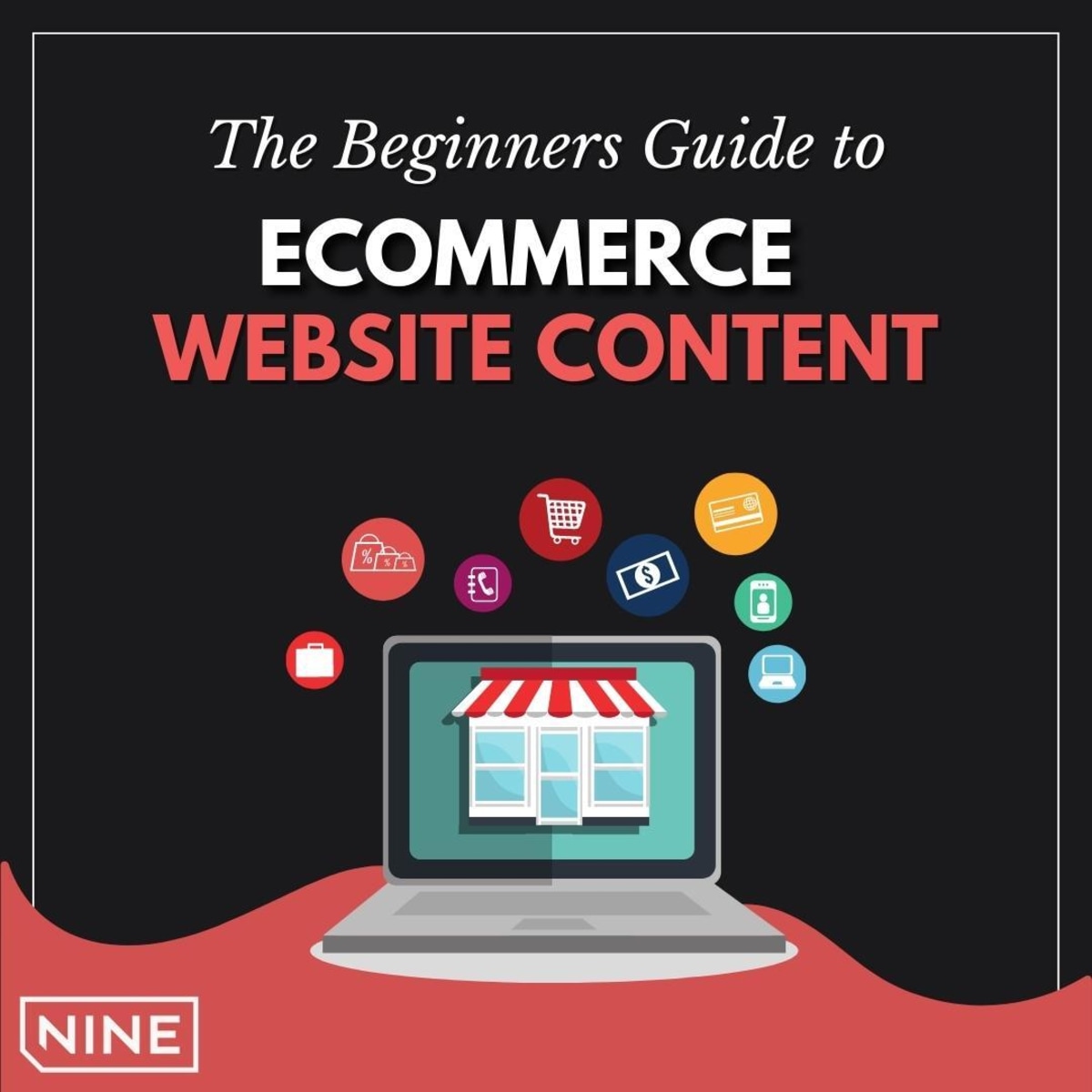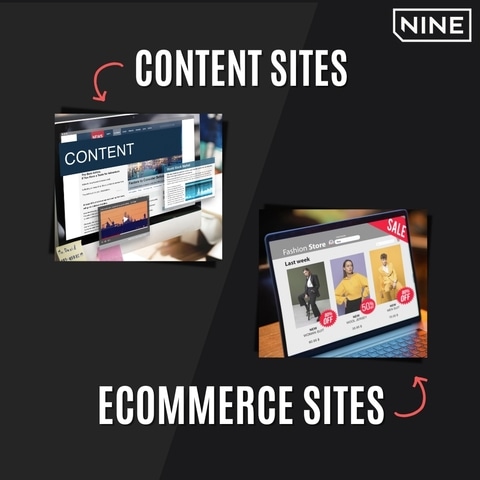
The Beginners Guide to Ecommerce Website Content
Think of the online marketplace or ecommerce platforms as a bustling, always-open city. The action never stops, and your store needs to stand out to capitalize on the 24/7 influx of potential customers. You've got to grab attention to get your share of the traffic and convert them into loyal clients.
With nothing but a blank screen and a waiting cursor, your mission is to create a digital work of art with unique content. One that not only attracts customers but also keeps them coming back. This is the magic of ecommerce content creation, the secret weapon of successful ecommerce businesses.
In this article, we will talk about ecommerce website content. We'll discuss common mistakes people make with website content, the best practices to adhere to, and more. So, let's get started.
What is Ecommerce Website Content?
Think of ecommerce website content as more than just words on a webpage. It's like a virtual salesperson, shop decor, product catalog, and more. Every piece of text, image, video, and interactive feature fills your ecommerce store.
Without enticing ecommerce content, an online store is empty and unengaging, like a physical store without any products or salespeople. Your content doesn't just give out informational content; it creates an engaging and immersive experience for your shoppers, a key part of content marketing.
Bringing Your Ecommerce Brand to Life
Your ecommerce content is your brand's voice. It narrates your brand story, showcases your products, and creates a bond with your customers. It aids in brand awareness and creates brand loyalty.
From your About Us page that tells your brand's tale to product descriptions that market your offerings, every bit of your content adds personality to your brand. When done right, it makes your brand unforgettable and sets you apart from your rivals.
Content Sites vs. Ecommerce Sites

While an ecommerce site can be a content site, not all content sites are ecommerce sites. Ecommerce sites have a clear goal: to sell products or services online.
That's why the content on an ecommerce site needs to be persuasive and action-oriented. It should lure customers into making a purchase. Conversely, a content site might aim to inform, entertain, or ignite thought, depending on its purpose and content type.
Reasons to Build an Ecommerce Website Content
Reach a Broader Audience
The most exciting reason to venture into ecommerce is to connect with a worldwide audience. An ecommerce site is accessible by anyone, anywhere, at any time, unlike physical stores that are time- and place-bound.
With engaging, high-quality content on your ecommerce site, you can reel in customers from every corner of the globe. Your content acts as a bridge, linking your products with potential buyers worldwide.
Stay Competitive
Online shopping has skyrocketed in today's digital era, making ecommerce sites a must-have for businesses. But just having a website isn't enough. You need standout content to make your mark in the jam-packed online marketplace. For this, keyword research is essential.
Your website's content mirrors your brand. When top-quality and engaging doesn't just draw in customers—it builds trust and credibility. To keep up with the digital race, you must offer an extraordinary online shopping experience; your content, especially organic content, is the key.
Boost Revenue
An ecommerce site decked with appealing, persuasive content can dramatically lift earnings. Here's the deal: Your website's content directly impacts how likely visitors will become your potential customers.
Every bit of content boosts your profits, be it compelling product descriptions, catchy blog posts, or persuasive customer testimonials. And with your ecommerce site's worldwide reach, your potential to increase your revenue is colossal.
Mistakes To Avoid in Ecommerce Website Content Creation
Overcomplicating Things
The phrase "less is more" works well for ecommerce content. You might get tangled up in fancy terms, tech specs, and detailed product information.
Yet customers usually look for simplicity. They are interested in learning what your product does, how it helps them, and why they should choose you. Remember, it doesn't need to be as complex as rocket science. Keep it neat and simple.

Overlooking SEO Best Practices
It's easy to get sidetracked when writing content by trying to make it more engaging. However, it's essential not to let SEO slip from your mind. SEO, or Search Engine Optimization, is vital to your site's visibility. It's the GPS that directs potential customers to your online store.
Neglecting SEO can backfire. Without it, your website is like a billboard in nowhere. It may look good, but only some will see it. This leads to less traffic and fewer sales.
So, bring SEO into your content creation. Think of it as the string that ties your catchy content to future customers. SEO doesn't have to be complicated. It can be as easy as blending in relevant keywords and adjusting meta descriptions and alt tags.
Inadequate Product Descriptions
Creating ecommerce content is about more than just drawing in visitors. It's about turning them into loyal customers. And product descriptions are your undercover sales force. They give customers a virtual taste of the product page, making them feel more confident about buying it.
A common slip-up is writing generic or inadequate product descriptions. These can leave customers guessing about product specifications or perks. This doubt can make them hesitate, which might mean lost sales.
There should be more to your product descriptions than just jotting down information. They should be informative, persuasive, and, above all, engaging. They should address any questions a customer might have. Help customers picture how the product will improve their lives and address their issues.
Lack of Regular Updates
In the fast-paced realm of ecommerce, out-of-date content is a hindrance. Stale content can make your website feel neglected and your brand outdated. As the world and trends evolve, so should your content.
Updating content means keeping abreast of current trends and industry advancements. This refreshes your site and reassures customers of your brand's active status. Regular updates signal your ongoing commitment to providing relevant and fresh content.
Think of your ecommerce site as a living entity. Like a plant needs water to grow, your website needs regular updates to thrive. It keeps your brand in sync with the market and fosters customer trust.
Neglecting Mobile Users
These days, we're pretty much inseparable from our mobile devices. A big part of online browsing is done on these portable gadgets. Your site is losing out on many potential customers if it isn't mobile-friendly. So, making your website user-friendly on mobile devices is super important.
Also, remember that folks on mobile usually have shorter attention spans. So, your content should be short and sweet. Stick to brief sentences and paragraphs to enhance readability and engage your mobile audience.
Ignoring the Power of Visual Content
One common mistake is underestimating the power of visuals. They say a picture is worth a thousand words, and in ecommerce, this is doubly true. Pictures, videos, and infographics can bring your products to life.
Visual content is a convincing tool. It gives potential customers a closer look at your products. It shows what words can't always convey. But remember, not all visuals are created equal. Low-quality visuals can dent your brand's reputation. Be sure to use high-quality, fitting visuals to elevate your ecommerce content.
Not Using a Conversational Tone
Your content's tone is critical to hooking in customers. Many ecommerce sites mess up by going for a formal, stiff tone. This can make your content feel far-off and hard to relate to.
Conversely, a chatty tone can amp up your content's appeal. Lending your content that human element can make your brand feel friendly and approachable.
But here's the thing: Balance is vital. Keep it casual, but don't forget about quality. You're aiming to talk with your customers, not lecture them.
Overcomplicating the Navigation
Simplicity in navigation is crucial for a pleasant user experience. Still, some ecommerce sites mess up by overdoing their navigation. They jam-pack their menus, leaving customers puzzled.
A clear, straightforward navigation menu can seriously improve the user experience. It can help customers find what they need faster. This lowers frustration and increases the chances of conversion.
Remember that your ecommerce site is there to make buying a breeze. The simpler it is for customers to get around, the more likely they'll make a purchase.
Best Practices in Ecommerce Website Content Creation
Understanding Your Audience
You've heard it before: the customer rules. In ecommerce, it's critical to know your customers like the back of your hand—their wants, likes, and problems. Who are you writing for? What tone will resonate with them?
Once you've identified your audience, your content can speak directly to them. A one-size-fits-all approach doesn't work in ecommerce. Make your customers feel recognized and valued with content made just for them.
Using High-Quality Images and Videos
We, as humans, are visual creatures. We digest images faster than text, and they stick around longer in our minds. That's why spicing up your ecommerce site with superb images and videos can make your content stand out and your products irresistible.
Imagine trying to buy a product online without seeing it—not very compelling, is it? Use visuals to help your customers better understand what they're getting. But remember, quality is critical. Blurry, poorly lit images can do more harm than good.
Adding Customer Reviews and Testimonials
There's power in numbers, and there's trust in real experiences. Adding customer reviews and testimonials to your ecommerce site can boost your credibility and help prospective customers make up their minds.
Think about it: Don't you read reviews when you're unsure about a purchase? They offer an unbiased look at your products and prove to potential buyers that others have had great experiences with your brand.
Incorporating Call-to-Actions (CTAs)
A call-to-action is like a signpost pointing your visitors in the right direction. It prompts them to take specific actions like "Add to Cart" or "Sign Up Now."
A well-placed, persuasive CTA can significantly increase conversions. It directs your visitors toward the next step, making the shopping process smoother and more intuitive. However, remember that your CTAs should be clear and concise. Your visitors should instantly understand what action you want them to take.
Integrating Social Media
Social media isn't just for sharing vacation photos and cute pet videos. It's a powerful tool for ecommerce businesses.
By linking social media to your ecommerce website, you can extend your reach and engage with your audience more personally. Sharing user-generated content, like customer photos or reviews, can boost your credibility and inspire more purchases. It adds an irresistible slice of the real deal.
Utilizing User-Generated Content
Trust is gold in ecommerce. And nothing fosters trust quite like user-generated content (UGC)—customer reviews, ratings, photos, and social media shoutouts.
Incorporating UGC into your ecommerce content strategy can flip the game. It not only lends an authentic touch to your content but also significantly boosts trust. After all, customers trust customers.
But UGC isn't just about ratings or reviews. It's about showcasing the genuine experiences of real customers and creating a community around your brand. It encourages others to share their experiences, creating a virtuous circle of trust and engagement.
Incorporating Keywords Naturally
SEO is about more than just getting traffic. It's about getting the right traffic. And keywords play a crucial role in this. They are the bridge between your content and the people looking for it.
However, stuffing your content with keywords can do more harm than good. It may result in a bad user experience or even search engine penalties. The trick is to add keywords to your content effortlessly. They should naturally flow into your content and shouldn't be forced.
This practice strikes a balance between SEO and readability. It ensures a smooth user experience while boosting your website's visibility. The result is content that is not only search engine-friendly but also reader-friendly.
The Role of Storytelling in Ecommerce Website Content
Crafting a Narrative Around Your Products
Storytelling is a solid way to connect deeper with your audience. By spinning a story around your products, you sell more than an item; you sell an experience.
For instance, don't just list a handmade scarf's features. Share the story of the craftsmen who made it, the traditional methods they used, and the warmth it gives. This adds richness to your content and allure to your products.
Building an Emotional Connection
Storytelling isn't just about relating events. It's about stirring up feelings and creating connections. Sharing your brand's journey or your products' inspiration ignites customers' emotions like excitement, admiration, and even nostalgia. This emotional connection can make your brand stick and build customer loyalty for years.
Conclusion
Ecommerce website content is a multifaceted world where the art of storytelling meets the science of SEO. It's where creativity and analysis combine to create an engaging, persuasive, and ultimately successful online store.
From understanding your audience to optimizing for search engines, from weaving compelling product descriptions to integrating customer reviews, every aspect plays a critical role in the success of your ecommerce website.
The most critical aspect is the human touch. The most effective ecommerce content speaks to the human behind the screen. It uses everyday language, tells relatable stories, and shows empathy. It's not just about selling products; it's about building relationships.

